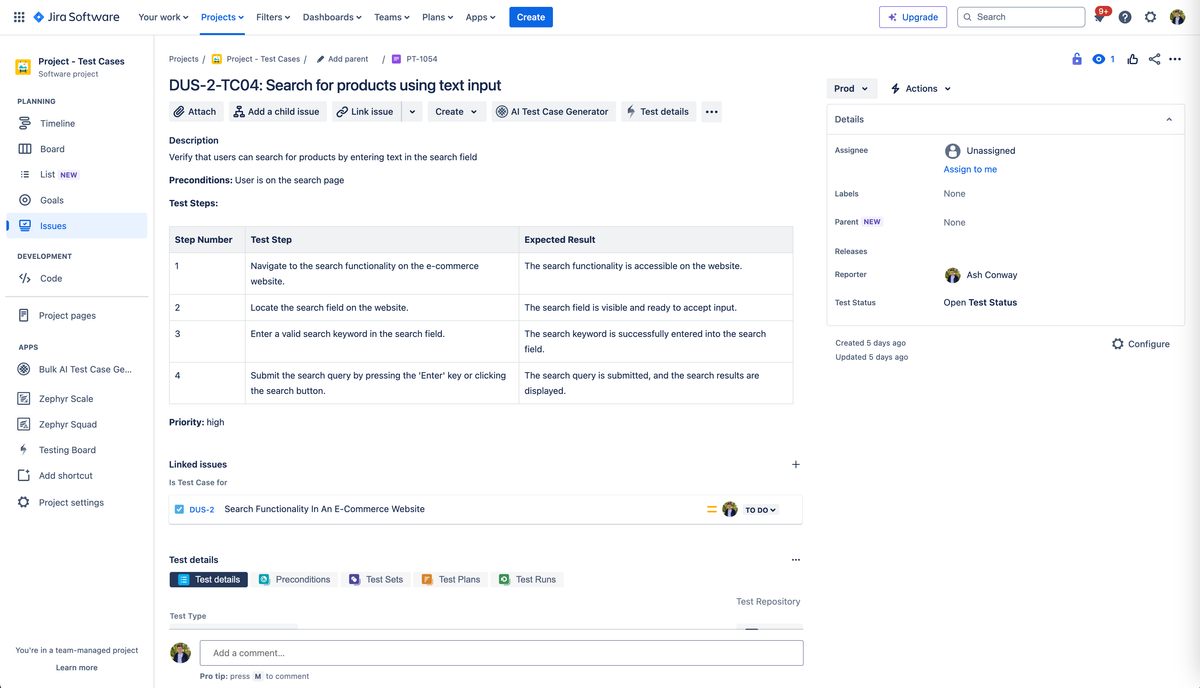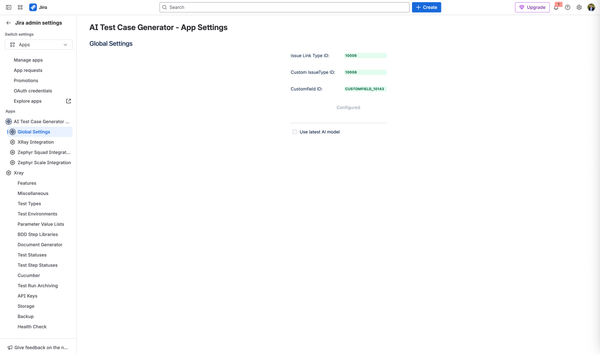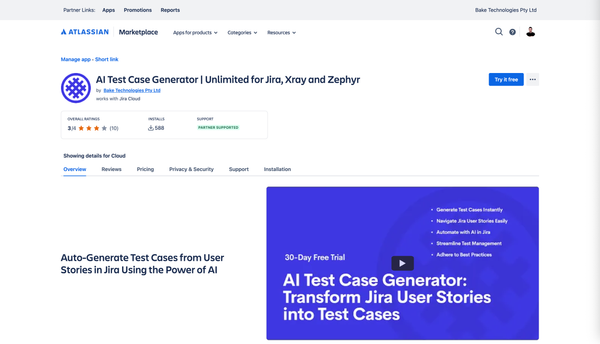Top QA Practices for Software Quality
Achieving top software quality requires precise planning, rigorous testing, and continuous improvement. By following structured QA methodologies and emphasizing debugging, dedicated QA teams ensure their products meet the highest standards, fostering trust and satisfaction among stakeholders.

Quality management and quality control matter in QA. Are they prepared for success?
They must embrace precise planning, rigorous testing, continuous improvement, and thorough verification for their QA process to thrive.
By following structured methodologies and emphasizing debugging, they ensure that their products meet the highest standards of excellence, fostering trust and satisfaction among their stakeholders.
Dedicated QA teams excel in quality management, quality control, and verification processes.
1. Introduction to QA Best Practices
Quality assurance (QA) and quality management are the cornerstones of any successful development process, ensuring that products meet established standards and specifications. It relies on a systematic approach to guarantee the highest quality through effective quality control measures.
In QA, every detail matters.
By implementing best practices and thorough verification, QA teams can minimize errors, reduce costs, and increase efficiency, thus adding value to the organization.
These practices include thorough documentation, robust testing methodologies, effective debugging, and continuous feedback mechanisms.
Effective QA requires a commitment to excellence, attention to detail, and an ongoing dedication to improvement, reinforcing the overall quality lifecycle.
Ultimately, the aim is to deliver products that not only fulfill customer requirements but also exceed their expectations. This level of commitment distinguishes industry leaders from their competitors.
2. Setting Up a QA Process
Establishing a reliable QA process is a pivotal step in achieving operational excellence. It begins with defining clear objectives, understanding user requirements, and setting measurable benchmarks for success. Involving key stakeholders from various departments ensures a comprehensive approach that aligns with the overall organizational goals. This collaborative effort not only identifies potential risks but also fosters a shared vision for quality. By investing in the right tools and technologies, teams can streamline workflows, making it easier to track progress and implement corrective actions. The ultimate goal is to create a sustainable, efficient QA process that consistently delivers exceptional products and services.
2.1 Defining QA Objectives
Defining QA objectives is crucial in setting clear expectations and ensuring project success.
Clear QA objectives reduce defect rates, which in turn enhances customer satisfaction and boosts overall product quality.
Effective QA objectives should align with the core goals of the organization and address specific user needs. This includes setting measurable targets and timelines to track progress and outcomes accurately.
Involving various stakeholders during the objective-setting phase builds a unified approach to quality. This collaborative effort ensures that every team member understands their role and the importance of meeting these objectives.
2.2 Selecting QA Tools
Selecting the right QA tools is a critical step towards achieving QA success.
To make this decision, he should evaluate tools based on specific criteria such as ease of use, integration capabilities, and the scope of functionalities. They should also consider the tool's scalability, ensuring it can grow with the project's demands.
Additionally, it is wise to look for tools that offer robust support and resources. Whether through documentation, community forums, or customer support, these resources can significantly enhance the team's ability to utilize the tool effectively.
Ultimately, selecting QA tools that align with organizational goals and project requirements can streamline processes, enhance productivity, and ensure consistent quality. This thoughtful selection fosters a culture of continuous improvement, contributing to the long-term success of QA endeavors.
3. Developing Test Plans
Developing test plans is crucial, as a robust and comprehensive approach ensures that quality standards are met. Meticulous planning lays the groundwork for detecting insufficient or erroneous processes, which in turn, allows for timely rectifications.
In crafting a test plan, they should prioritize a "test coverage" mindset. This ensures that no aspect of the software is left unchecked, encompassing functional, performance, and security testing. By doing so, the assurance of quality spans the entire product, leaving no stone unturned, thus fostering a high level of confidence in the final output.
3.1 Writing Test Cases
Writing test cases is a pivotal activity, shaping the effectiveness of QA efforts and the final product's reliability.
To excel, one must emphasize clarity in documenting test cases to provide an unequivocal guideline. Clear, concise descriptions allow testers and developers to understand the scope and requirements, thereby minimizing misinterpretations and maximizing the accuracy of testing outcomes.
Furthermore, every test case should be aligned with specific requirements of the software. By correlating each test case with relevant functional specifications, one ensures comprehensive validation and robustness, which will ultimately enhance the software’s quality.
Finally, adopting a systematic approach to writing test cases, incorporating iterative reviews and updates, ensures they remain relevant, thorough, and adaptable to evolving project needs. This disciplined process not only fortifies the foundation of quality assurance but also galvanizes the team's resilient commitment to delivering superior software solutions.
3.2 Prioritizing Tests
Effectively prioritizing tests enhances the efficiency and effectiveness of the QA process. By identifying critical areas to focus on, one can improve overall quality.
- Identify High-Risk Areas - Focus on parts of the software that have the highest risk of failing or causing significant impact if they do.
- Assess Functional Importance - Prioritize tests based on the importance of features and functionalities to the overall user experience and core operations.
- Utilize Test Data Analysis - Leverage historical data and previous test outcomes to identify patterns and areas requiring more rigorous testing.
- Incorporate Stakeholder Input - Include feedback from all relevant stakeholders to gauge which features need the highest level of scrutiny.
- Consider Test Dependencies - Establishing which tests have dependencies can help in sequencing them effectively to prevent cascading issues.
Prioritizing tests involves evaluating numerous factors systematically. This process ensures that the most crucial aspects receive adequate attention first.
A structured prioritization strategy helps in allocating resources efficiently, leading to a more agile and proactive quality assurance process.
4. Implementing Automated Testing
Implementing automated testing and debugging is pivotal to enhancing the efficiency and reliability of the quality assurance process. By integrating automated tests, teams can execute repetitive, labor-intensive tasks with precision, ultimately accelerating the delivery pipeline while minimizing human error.
These automated tests enable consistent validation across various platforms and configurations, ensuring comprehensive coverage. Moreover, they free up valuable time for QA professionals to focus on more complex and exploratory testing activities.
4.1 Choosing Automation Tools
Selecting the right automation tools plays a critical role in the success of a QA strategy.
Automation tools must align with specific project requirements to ensure optimal functionality.
Factors such as ease of integration, scalability, and community support significantly influence the decision-making process for QA teams.
By assessing these variables and engaging in a thorough evaluation of available options, organizations can identify tools that not only meet immediate needs but also support future growth. It is essential to consider tools like Selenium, JUnit, or TestNG, which provide robust frameworks for creating and managing automated tests effectively.
4.2 Writing Automation Scripts
Crafting effective automation scripts is a cornerstone of a successful QA strategy. Well-written scripts ensure accurate, repeatable, and efficient testing processes.
- Simple and Clear Code: Maintain readability and simplicity.
- Reusable Components: Develop modular scripts to avoid redundancy.
- Robust Error Handling: Implement comprehensive error checks.
- Meaningful Comments: Document the code for future reference.
- Consistent Naming Conventions: Use a standardized approach for clarity.
These practices streamline the automation process, making it more manageable and less error-prone.
QA teams should regularly review and refactor scripts.
This continuous improvement cycle enhances script efficiency and reliability.
5. Conducting Manual Testing
Manual testing serves as an essential counterpart to automation, providing the human touch that uncovers subtleties machines might miss. Skilled testers use their intuition and creativity to probe deeper into applications, identifying complex issues that automated tests may overlook. By carefully executing test cases and exploring unscripted scenarios, they ensure software integrity and user satisfaction. With a keen eye for detail and a thorough understanding of the user experience, manual testers play a critical role in delivering high-quality software that aligns with customer expectations and business goals.
5.1 Exploratory Testing Techniques
Exploratory testing involves unscripted, investigative testing sessions, where testers leverage their knowledge of the application's functionality to uncover hidden defects. These sessions require creative thinking and adaptability.
This approach allows testers to examine the software from a user perspective.
Moreover, exploratory testing techniques are highly effective in identifying complex, real-world issues that scripted tests might miss.
Testers document their findings in real-time, ensuring fresh and accurate feedback.
The freedom granted by exploratory testing results in discovering unique bugs, validating the agility of the software under various scenarios, and improving user satisfaction.
Ultimately, the goal is to harness intuition and experience to enhance the overall quality assurance process. Exploratory testing provides invaluable insights that bolster the development cycle’s robustness.
5.2 Regression Testing
Regression testing is a pivotal practice within QA, ensuring that existing functionalities remain intact after new code changes.
These tests help in identifying any unexpected side-effects of code updates.
By consistently running regression tests, teams can maintain the stability and reliability of their applications, safeguarding against user-reported issues.
The process involves rerunning previously completed test cases on new versions of the software to confirm that previously resolved defects have not resurfaced. It not only strengthens the software's foundation but also speeds up the deployment process, instilling confidence in relentless progress and continuous improvement.
6. Monitoring and Reporting
Consistent monitoring and reporting are cornerstones of QA processes, ensuring teams stay informed and proactive.
By utilizing various monitoring tools and detailed reporting mechanisms, QA teams can observe system performance, identify trends, enhance efficiency, and address issues before they escalate into user-facing problems.
Terms like "proactive" and "continuous improvement" become synonymous with the QA team's ethos.
6.1 Tracking QA Metrics
Tracking QA metrics enables teams to measure effectiveness and drive continuous improvements in quality assurance practices.
- Defect Density: Measures the number of defects per lines of code.
- Test Coverage: Indicates the percentage of code executed by automated tests.
- Defect Leakage: Tracks defects that were not detected during the QA phase but were found after release.
- Test Execution Rate: Measures how many test cases are executed in a given period.
- Mean Time to Detect (MTTD): The average time taken to identify a defect.
- Mean Time to Repair (MTTR): The average time taken to resolve a detected defect.
By meticulously analyzing these metrics, QA teams can pinpoint areas needing improvement and enhance their processes effectively.
Successful tracking of QA metrics not only optimizes performance but fosters a culture of excellence and accountability.
6.2 Reporting Bugs Effectively
Efficient bug reporting is vital to the effectiveness of any Quality Assurance (QA) strategy.
- Detailed Description: Provide a clear, concise explanation of the bug with relevant context.
- Steps to Reproduce: List the exact steps to replicate the issue, ensuring consistency.
- Expected vs. Actual Results: Articulate what was anticipated and what occurred.
- Environment Details: Specify the testing environment, including operating system, browser, and versions.
- Screenshots and Logs: Attach visual evidence and log files to aid diagnosis and resolution.
- Priority and Severity: Assess the impact and urgency to guide developers effectively.
By adhering to these steps, the QA process becomes more streamlined and efficient.
Accurate bug reporting accelerates resolution and minimizes misunderstandings.
Effective communication and thorough documentation are the cornerstones of a successful QA process.
7. Continuous Improvement in QA
Continuous improvement in QA involves regularly assessing and refining processes and methodologies to ensure they remain effective, scalable, and aligned with evolving industry standards. Teams should embark on routine evaluations, gather feedback, and stay well-informed of emerging tools and technologies that can enhance their workflows.
This commitment to perpetual enhancement fosters innovation, mitigates risks, and consistently improves the quality of deliverables.
7.1 Analyzing QA Outcomes
To ensure continuous improvement, QAs must rigorously analyze outcomes, track metrics, and identify trends. This process yields actionable insights that drive process enhancements and optimize product quality.
Effective analysis requires comprehensive test data. The data should cover a broad spectrum of metrics for a thorough evaluation.
QAs should utilize advanced analytics tools. These tools provide detailed visualizations, helping teams understand intricate data patterns.
Data-driven decisions lead to more focused enhancements. They help prioritize areas that have the highest impact on product quality.
Implementing feedback loops fosters ongoing improvement. Ensuring that insights from analysis are communicated effectively enhances collaboration and accountability.
By consistently analyzing outcomes, teams harness the power of data. They transform insights into actionable strategies, elevating quality standards continually.
7.2 Implementing Feedback Loops
Implementing feedback loops fosters effective communication and continuous improvement within QA processes.
First and foremost, an efficient feedback loop is a structured mechanism that captures, analyzes, and acts upon the responses from all stakeholders. Incorporating insights from developers, testers, and end-users ensures that the feedback loop addresses diverse perspectives and results in holistic quality improvements.
Regular review meetings are a cornerstone of a successful feedback loop. By dedicating time to discuss recent feedback, teams can promptly identify and resolve issues, continuously refining their processes and outputs.
Additionally, feedback should be documented and tracked for future reference. This practice enables teams to identify recurring patterns or issues over time, providing valuable data to fine-tune quality assurance strategies and achieve higher levels of excellence.
Frequently Asked Questions
What is QA Testing?
QA Testing, or Quality Assurance Testing, is a systematic process that ensures a software product meets specified requirements and is free of defects. It involves various testing methods to identify and fix issues before the product is released.
Why is QA Testing important?
QA Testing is crucial because it helps ensure the reliability, performance, and security of the software. It minimizes the risk of defects, enhances user satisfaction, and saves costs by identifying issues early in the development process.
What are the different types of QA Testing?
There are several types of QA Testing, including:
- Manual Testing: Involves human testers executing test cases without automation tools.
- Automated Testing: Uses scripts and tools to perform tests automatically.
- Functional Testing: Verifies that the software functions as expected.
- Performance Testing: Assesses the software's performance under various conditions.
- Security Testing: Ensures the software is secure from vulnerabilities.
- Usability Testing: Evaluates the user-friendliness of the software.
How does QA Testing fit into the software development lifecycle?
QA Testing is integrated throughout the software development lifecycle (SDLC). It starts from the requirements phase, continues through design and coding, and is rigorously applied during the testing phase. It ensures that each stage of development meets quality standards.
What tools are commonly used in QA Testing?
Common tools used in QA Testing include:
- Selenium: For automated web application testing.
- JIRA: For bug tracking and project management.
- TestRail: For test case management.
- LoadRunner: For performance testing.
- Appium: For mobile application testing.
What are the best practices for effective QA Testing?
Effective QA Testing involves:
- Early Involvement: Integrating QA from the beginning of the project.
- Clear Requirements: Ensuring requirements are well-defined and understood.
- Comprehensive Test Plans: Developing detailed test plans and cases.
- Automation: Leveraging automation for repetitive tasks.
- Continuous Integration: Using CI/CD pipelines to integrate testing into the development process.
- Regular Reviews: Conducting regular code and test case reviews.
How can QA Testing boost project success?
QA Testing boosts project success by:
- Improving Quality: Ensuring the software meets high standards.
- Reducing Costs: Identifying and fixing defects early, reducing the cost of rework.
- Enhancing User Satisfaction: Delivering a reliable and user-friendly product.
- Increasing Efficiency: Streamlining the development process with automated testing and continuous integration.
What challenges are commonly faced in QA Testing?
Common challenges in QA Testing include:
- Changing Requirements: Adapting to evolving project requirements.
- Resource Constraints: Managing limited time, budget, and personnel.
- Complexity: Handling complex and large-scale projects.
- Tool Integration: Ensuring compatibility and integration of various testing tools.
- Communication: Maintaining clear and effective communication among team members.
How can these challenges be addressed?
These challenges can be addressed by:
- Agile Methodologies: Adopting agile practices to manage changing requirements.
- Effective Planning: Allocating resources efficiently and planning thoroughly.
- Training: Providing ongoing training and support for QA professionals.
- Tool Selection: Choosing the right tools that integrate well with existing systems.
- Collaboration: Encouraging open communication and collaboration within the team.
What is the future of QA Testing?
The future of QA Testing is likely to involve:
- Increased Automation: Greater reliance on AI and machine learning for automated testing.
- DevOps Integration: Closer integration with DevOps practices for continuous testing.
- Shift-Left Testing: Moving testing earlier in the development process.
- Enhanced Security Testing: Focus on security as cyber threats evolve.
- User-Centric Testing: Emphasis on usability and user experience testing.
By staying informed about these trends and continuously improving practices, QA professionals can ensure their projects achieve success.




